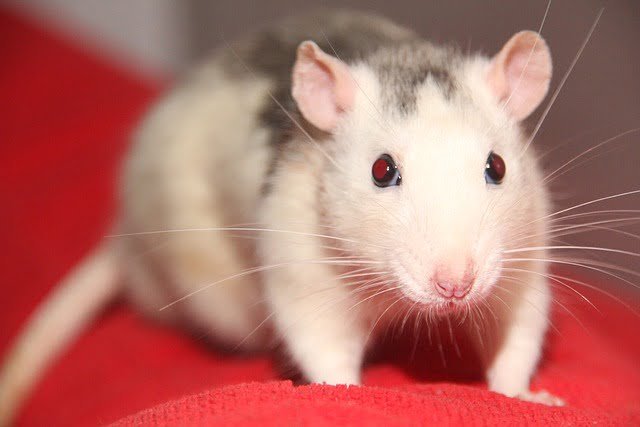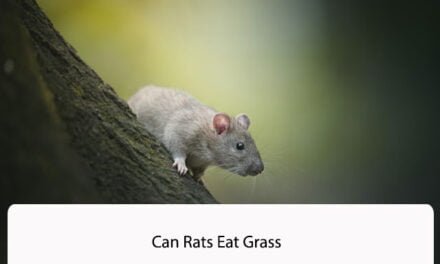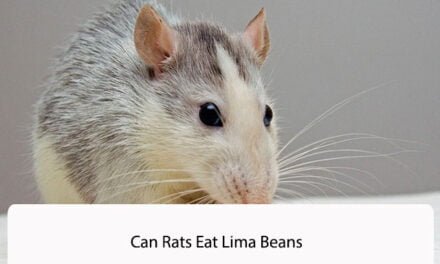Rats are fascinating creatures that make great pets. They are intelligent, social animals that require a balanced diet to stay healthy. As a rat owner, you may be wondering if your furry friend can eat hay. In this article, we will explore whether rats can eat hay and what benefits it may provide for them.
Hay is a common food source for many animals, including rabbits and guinea pigs. It is a good source of fiber, which is essential for healthy digestion. However, rats have different dietary requirements compared to other small animals. While hay may provide some nutritional benefits for rats, it is not a necessary part of their diet. In the following paragraphs, we will discuss the pros and cons of feeding hay to rats and what other foods you should consider incorporating into their diet.

Understanding Rats’ Diet
Rats are omnivores, which means they eat both plants and animals. In the wild, they eat a variety of foods, including seeds, nuts, fruits, insects, and small animals. In captivity, rats need a balanced diet to stay healthy.
As pet owners, it’s our responsibility to ensure that our rats have a nutritious diet. A balanced diet for rats should consist of:
- High-quality pellet food: Pellet food is a great source of essential nutrients and should make up the bulk of your rat’s diet. Look for a pellet food that is specifically formulated for rats and contains a variety of vitamins and minerals.
- Fresh fruits and vegetables: Rats love fruits and vegetables, and they provide essential vitamins and minerals. Some good options include carrots, broccoli, apples, and bananas.
- Protein: Rats need protein to stay healthy, and it can come from a variety of sources. Good options include cooked chicken, eggs, and tofu.
- Hay: While rats don’t need hay in their diet, it can be a good addition to their cage. Hay can help keep their teeth healthy and provide a source of fiber.
It’s important to remember that rats have sensitive digestive systems, so it’s essential to introduce new foods slowly and in small amounts. Additionally, rats need access to fresh water at all times.
In conclusion, a balanced diet is crucial for the health and well-being of our pet rats. By providing them with a variety of foods, including high-quality pellet food, fresh fruits and vegetables, protein, and hay, we can ensure that they are getting all the essential nutrients they need to thrive.
Can Rats Eat Hay
Hay is a common food source for many farm animals such as horses, cows, and sheep. But can rats eat hay? We did some research to find out.
Hay is made from dried grasses, legumes, or other plants and is often used as bedding for small animals such as rabbits and guinea pigs. While hay is not toxic to rats, it is not a recommended food source for them.
Rats are omnivores and require a balanced diet that includes protein, fat, and carbohydrates. While hay does contain some fiber, it is not a good source of the nutrients that rats need to thrive.
In addition, rats have very sensitive digestive systems and can experience gastrointestinal issues if they consume too much indigestible fiber. This can lead to bloating, constipation, and even intestinal blockages.
While it is not recommended to feed rats hay as a primary food source, small amounts can be given as a treat or for enrichment purposes.
In summary, rats can eat hay, but it is not a recommended food source for them. A balanced diet that includes protein, fat, and carbohydrates is essential for their health and well-being.
Benefits of Hay in Rats’ Diet
Hay is an essential part of a rat’s diet. It provides numerous benefits that help maintain their overall health and well-being. Here are some of the benefits of hay in a rat’s diet:
1. High Fiber Content
Hay is an excellent source of fiber, which is essential for a rat’s digestive system. It helps in maintaining healthy gut flora and prevents digestive problems such as constipation and diarrhea. Moreover, the high fiber content in hay also helps in maintaining healthy teeth and gums.
2. Nutrient-rich
Hay is also a nutrient-rich food that provides rats with essential vitamins and minerals. It contains vitamin C, which is essential for a rat’s immune system, and vitamin K, which helps in blood clotting. Additionally, hay also contains minerals such as calcium and magnesium, which are essential for maintaining healthy bones.
3. Promotes Natural Foraging Behavior
Rats are natural foragers and love to dig and burrow. Providing them with hay in their diet promotes this natural behavior and helps in keeping them mentally stimulated. It also provides them with a comfortable and cozy place to rest and sleep.
4. Helps in Weight Management
Hay is a low-calorie food that helps in maintaining a healthy weight in rats. It provides them with a feeling of fullness, which prevents overeating and helps in weight management.
In conclusion, hay is an essential part of a rat’s diet that provides numerous benefits. It helps in maintaining a healthy digestive system, provides essential nutrients, promotes natural foraging behavior, and helps in weight management. Therefore, it is crucial to include hay in your rat’s diet.
Potential Risks of Feeding Hay to Rats
While hay is often used as a bedding material for rats, it is not a recommended food source. Here are some potential risks associated with feeding hay to rats:
1. Digestive Issues
Rats are omnivores and require a diet that is high in protein and low in fiber. Feeding them hay, which is high in fiber and low in protein, can lead to digestive issues such as diarrhea, bloating, and gas.
2. Fungal Contamination
Hay is often grown and stored in damp environments, which can lead to fungal contamination. Feeding rats contaminated hay can lead to respiratory issues, such as sneezing, coughing, and wheezing.
3. Pesticide Residues
Hay is often treated with pesticides to prevent insect infestations. Feeding rats hay that has been treated with pesticides can lead to toxicity and other health issues.
4. Nutritional Imbalances
Feeding rats hay as a primary food source can lead to nutritional imbalances. Hay is low in essential vitamins and minerals, such as vitamin D, calcium, and phosphorus, which are important for a rat’s overall health.
Overall, it is best to avoid feeding hay to rats as a food source. Instead, opt for a diet that is high in protein and low in fiber, such as a commercial rat food or a homemade diet that includes fresh fruits, vegetables, and lean protein sources.

Alternatives to Hay for Rats
While hay is a popular food choice for rats, there are other options available that can provide similar nutritional benefits. Here are some alternatives to consider:
1. Pellets
Pellets are a common food choice for rats, and they are available in a variety of formulas that cater to different nutritional needs. Pellets are usually made from a combination of grains, vegetables, and fruits, and they can be a good source of protein, fiber, and other essential nutrients.
2. Fresh Fruits and Vegetables
Fresh fruits and vegetables are a great way to supplement your rat’s diet with vitamins and minerals. Some good options include carrots, apples, broccoli, and leafy greens like spinach and kale. Just be sure to wash the produce thoroughly before feeding it to your rat.
3. Cooked Grains and Legumes
Cooked grains and legumes like brown rice, quinoa, and lentils can provide your rat with a good source of protein and fiber. Just be sure to avoid seasoning the grains or legumes with salt or other spices that may be harmful to your rat.
4. Commercial Rat Treats
There are many commercial rat treats available that can provide your rat with a tasty and nutritious snack. Look for treats that are made with high-quality ingredients and avoid those that are high in sugar or other unhealthy additives.
Overall, there are many alternatives to hay that can provide your rat with the nutrition it needs to stay healthy and happy. By offering a variety of foods and treats, you can ensure that your rat gets all the nutrients it needs to thrive.
How to Introduce Hay to Rats’ Diet
When introducing hay to a rat’s diet, it is important to do so gradually to avoid any digestive upset. We recommend starting with a small amount of hay, about a handful, mixed in with their regular food. This way, they can gradually get used to the taste and texture of the hay.
It is also important to ensure that the hay is fresh and clean. We suggest purchasing hay from a reputable source, such as a pet store, and checking for any signs of mold or dust. Rats are sensitive to respiratory issues, so it is important to avoid any dusty or moldy hay.
In addition to mixing hay in with their regular food, you can also offer it as a separate snack. Rats enjoy chewing on hay, which can help keep their teeth healthy and prevent overgrowth.
If your rat is hesitant to try hay, you can try adding a small amount of their favorite treat to it, such as a piece of fruit or a vegetable. This can help entice them to try the hay and get used to the taste.
Overall, introducing hay to a rat’s diet can be a great way to provide them with additional fiber and promote dental health. With a gradual introduction and fresh, clean hay, your rat can enjoy this nutritious snack.
Conclusion
In conclusion, rats can eat hay, but it should not be their primary source of food. While hay can provide some nutritional value, it lacks certain essential vitamins and minerals that rats require for optimal health.
It is important to note that not all types of hay are safe for rats to consume. Timothy hay is the most commonly recommended type of hay for rats, as it is low in calcium and high in fiber. Other types of hay, such as alfalfa hay, can be too high in calcium and may cause health issues in rats if consumed in excess.
Rats should primarily be fed a well-balanced diet of commercial rat food, supplemented with fresh fruits and vegetables. It is also important to ensure that rats have access to clean water at all times.
While hay can be a beneficial addition to a rat’s diet, it should not be relied upon as the sole source of nutrition. As with any dietary changes, it is important to consult with a veterinarian before making any significant changes to a rat’s diet.

Frequently Asked Questions
What should we feed our rats besides hay?
Rats need a well-balanced diet that includes protein, carbohydrates, and fat. In addition to hay, rats can eat a variety of fruits, vegetables, and grains. It’s important to offer a variety of foods to ensure that your rats are getting all the nutrients they need.
What is the best bedding for rats?
The best bedding for rats is a material that is absorbent, comfortable, and safe. Some popular options include paper-based bedding, aspen shavings, and fleece. Avoid using cedar or pine shavings as they can be harmful to rats.
Do rats need a wheel in their cage?
While rats don’t necessarily need a wheel in their cage, it can be a great form of exercise and mental stimulation for them. If you do decide to get a wheel, make sure it’s large enough for your rats to run comfortably and that it has a solid surface to prevent injury.
Can rats eat guinea pig food?
Guinea pig food is not ideal for rats as it doesn’t provide all the nutrients they need. Rats require a higher protein and fat content in their diet. It’s best to stick to food specifically formulated for rats.
What do rats need in their cage?
Rats need a cage that is large enough for them to move around comfortably, with plenty of toys and hiding places to keep them entertained. They also need a clean and safe environment, with fresh food and water daily.
Is it safe for rats to eat straw or hay?
While it’s generally safe for rats to eat hay in small amounts, it’s not a necessary part of their diet. Straw, on the other hand, is not recommended as it can be difficult for rats to digest and may cause digestive problems.





